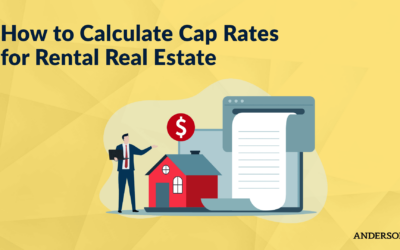What does it take to become a Real Estate Professional?
In this episode of Coffee with Carl, attorney Carl Zoellner breaks down how to qualify as a real estate professional and the IRS tests that must be met.
Updated September 9, 2020
If you spend a substantial amount of time during the tax year working with real estate, you may benefit from real estate professional status. Being a real estate professional has huge benefits. This is especially true if you’re in a tax situation where you have a lot of active income that you’d like to offset with passive losses that wouldn’t normally fully apply to active gain.
With this episode, I want to break down the ins and outs of qualifying for real estate professional status, including the specific language the IRS uses and the benefits of qualification. First and foremost, let’s look at the actual language the IRS uses.
IRS Publication 925
IRS Publication 925 provides the stipulations for qualifying as a real estate professional. Relevant portions are reproduced below.
Real Estate Professional
Generally, rental activities are passive activities even if you materially participated in them. However, if you qualified as a real estate professional, rental real estate activities in which you materially participated aren’t passive activities. For this purpose, each interest you have in a rental real estate activity is a separate activity, unless you choose to treat all interests in rental real estate activities as one activity.
It goes on:
Qualifications. You qualified as a real estate professional for the year if you meet both of the following requirements:
- More than half of the personal services you performed in all trades or businesses during the tax year were performed in real property trades or businesses in which you materially participated.
- You performed more than 750 hours of services during the tax year in real property trades or businesses in which you materially participated.
Don’t count personal services you performed as an employee in real property trades or businesses unless you were a 5% owner of your employer. You were a 5% owner if you owned (or are considered to have owned) more than 5% of your employer’s outstanding stock, outstanding voting stock, or capital or profits interest.
It continues:
Real property trades or businesses. A real property trade or business is a trade or business that does any of the following with real property.
- Develops or redevelops it.
- Constructs or reconstructs it.
- Acquires it.
- Converts it.
- Rents or leases it.
- Operates or manages it.
- Brokers it.
IRS Publication 925 also defines “material participation” as follows:
Material participation tests. You materially participated in a trade or business activity for a tax year if you satisfy any of the following tests.
- You participated in the activity for more than 500 hours.
- Your participation was substantially all the participation in the activity of all individuals for the tax year, including the participation of individuals who didn’t own any interest in the activity.
- You participated in the activity for more than 100 hours during the tax year, and you participated at least as much as any other individual (including individuals who didn’t own any interest in the activity) for the year
- The activity is a significant participation activity, and you participated in all significant participation activities for more than 500 hours. A significant participation activity is any trade or business activity in which you participated for more than 100 hours during the year and in which you didn’t materially participate under any of the material participation tests, other than this test. See Significant Participation Passive Activities, under Recharacterization of Passive Income, later.
- You materially participated in the activity (other than by meeting this fifth test) for any 5 (whether or not consecutive) of the 10 immediately preceding tax years.
- The activity is a personal service activity in which you materially participated for any 3 (whether or not consecutive) preceding tax years. An activity is a personal service activity if it involves the performance of personal services in the fields of health (including veterinary services), law, engineering, architecture, accounting, actuarial science, performing arts, consulting, or any other trade or business in which capital isn’t a material income-producing factor.
- Based on all the facts and circumstances, you participated in the activity on a regular, continuous, and substantial basis during the year.
What It All Means
Let’s first look at the second sentence under “Real Estate Professional”: “However, if you qualified as a real estate professional, rental real estate activities in which you materially participated aren’t passive activities.”
This means that, if I’m materially participating in my rental and want to qualify as a real estate professional, then I’m no longer classifying those activities as passive. The implication of this is reflected in the passive activity loss rules, or PALs. The IRS’s passive activity loss rules state that you can offset passive gain with passive loss, but those passive losses don’t fully extend to active income. Under PALs, only a small portion of passive losses apply to active income. However, if you qualify as a real estate professional, you can apply passive losses in full to your active gain. This strategy is especially useful with high W-2 income earners, for instance, who could use passive losses to offset active gain — if they qualify.
So how do you qualify? Let’s look at the “Qualifications” section again:
You qualified as a real estate professional for the year if you meet both of the following requirements:
- More than half of the personal services you performed in all trades or businesses during the tax year were performed in real property trades or businesses in which you materially participated.
- You performed more than 750 hours of services during the tax year in real property trades or businesses in which you materially participated.
Don’t count personal services you performed as an employee in real property trades or businesses unless you were a 5% owner of your employer. You were a 5% owner if you owned (or are considered to have owned) more than 5% of your employer’s outstanding stock, outstanding voting stock, or capital or profits interest.
Let’s break down the first test: “More than half of the personal services you performed in all trades or businesses during the tax year were performed in real property trades or businesses in which you materially participated.” So, what’s a real property trade or business? Well, the IRS defines that under “Real property trades or businesses”:
A real property trade or business is a trade or business that does any of the following with real property.
- Develops or redevelops it.
- Constructs or reconstructs it.
- Acquires it.
- Converts it.
- Rents or leases it.
- Operates or manages it.
- Brokers it.
Most real estate investors fall into one of these categories in one way or another. If you manage your own properties, that’s basically a direct line to qualification as long as “more than half of the personal services you performed” are in that trade or business.
“More than half” means more than 50%. Here’s a good example: if I have a bike repair shop and spend 1,000 hours on bike repair and 1,000 hours on real estate during the year, I don’t qualify. It has to be more than half. If I spend 1,000 hours on bike repair and 1,001 hours on real estate, I qualify since now I’ve used more than half my personal service time on real estate.
Usually, the scenario I see most often with clients is that one spouse may have a high-income W-2 job and the other works on real estate portfolio investments. If the two spouses file a joint tax return, then both spouses don’t have to qualify as real estate professionals to receive the benefits. Only one spouse has to qualify to offset active gains with passive losses on a married-filing-jointly return.
For example, I’ve seen high-income W-2 earners use this quite successfully in conjunction with a spouse who’s a real estate professional. We have a friend of the firm who is a successful litigation attorney; he made around $3 million in one tax year. His wife is a real estate professional. During that year, they bought up a bunch of real estate and used accelerated depreciation to offset the entire active gain from the attorney’s legal practice. The IRS challenged this but the couple won because they followed the rules.
Material Participation & Qualifications
Now, let’s look at what it means to “materially participate.” There are seven tests for material participation set by the IRS (see above) or IRS Publication 925. For our clients, we tend to use tests 1-4 more often than tests 5-7, but that doesn’t mean you couldn’t fall under tests 5-7.
When I look at a client and whether they qualify for real estate professional status, the first thing I look for is material participation. If they meet that test, the next question is: what percentage of your personal services did you perform in real estate property trades or business? Is it more than 50%? Then, I want to make sure they’ve spent at least 750 hours doing this activity.
How do you verify that you’ve spent 750 hours on this activity? Just like everything else tax-related, you document it. Document your time meticulously. This will serve as evidence in the event of any IRS challenges.
Finally, let’s go back to the definition of real estate professional; specifically, let’s look at the last sentence: “For this purpose, each interest you have in a rental real estate activity is a separate activity, unless you choose to treat all interests in rental real estate activities as one activity.”
I’ve seen other CPAs miss this, but this means that you have the ability to aggregate all your real estate activities under real estate professional status versus having to qualify on a per-property basis.
Summary
To summarize: qualifying as a real estate professional provides significant benefits, but there are IRS tests that must be met. My advice would be to work with an experienced professional who’s aware of the tests for qualifications. This is not an area where you want to “go it alone,” especially if it’s your first time trying to qualify.
Watch as Carl explains the IRS tests for qualifying as a real estate professional and the tax implications of obtaining real estate professional status.
As always, take advantage of our free educational content and every other Tuesday we have Toby’s Tax Tuesday, another great educational series. Our Structure Implementation Series answers your questions about how to structure your business entities to protect you and your assets. One of my favorites as well is our Infinity Investing Workshop.
Additional Resources:
- Join our next Tax & Asset Protection event to learn more advanced tax minimization & entity structuring strategies
- Subscribe to our YouTube channel to make sure you never miss the latest strategies & updates
Got an idea for a future Coffee with Carl? Send it to Carl at cwc@andersonadvisors.com.
BONUS VIDEO











